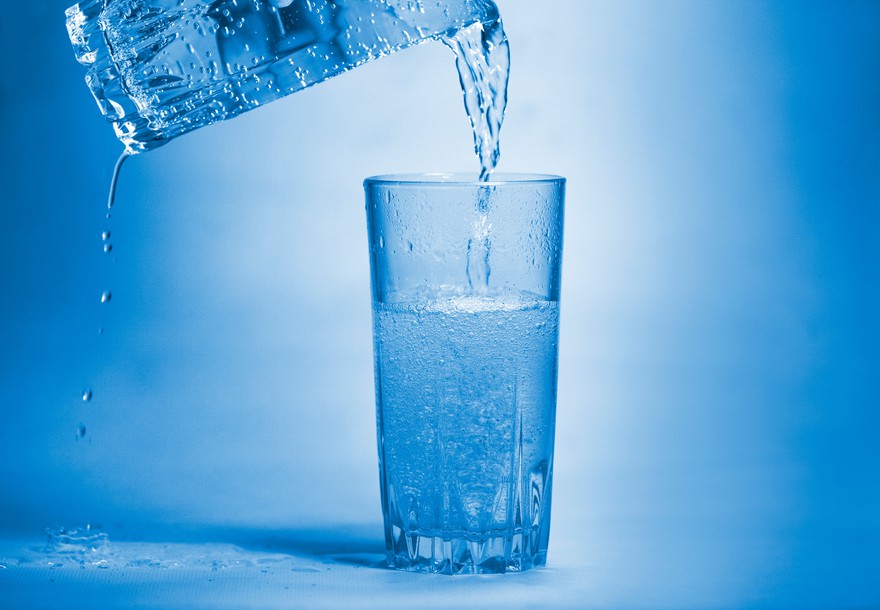Water is the most important commodity that we largely take for granted. It is essential not only for life but also for a range of industries and almost all economic activities. From agriculture and beverages to industrial applications and consumer staples, there is a clear and growing demand for fresh, clean water -- and a limited supply.

Add the impact of climate change, which is shifting water flows and leading to potential water shortages worldwide, and there is a pressing need for governments and the private sector to invest in water infrastructure.
A market with almost unlimited demand and limited supplies can make for an intriguing investment. There are a large number of water stocks to pick from, including utilities, filtration companies, and the makers of pumps and pipes needed to transport water. However, utilities tend to be limited in their geographic reach, and water tech and equipment companies are often specialists.
Water exchange-traded funds (ETFs) are baskets of stocks that provide broad exposure to the sector without forcing an investor to pick individual companies. You'd have to buy a lot of stocks to get exposure to the entire sector. So it could make more sense to invest in water through an ETF that gives you a small interest in many companies focused on making sure clean water gets to where it is needed.
Top water ETFs in 2025
Company | Total Assets | Description |
|---|---|---|
Invesco Water Resources ETF (NASDAQ:PHO) | $2.2 billion | A top-heavy collection of water stocks ranging from filtration-tech makers to utilities to pumping-equipment makers. |
First Trust Water ETF (NYSEMKT:FIW) | $1.9 billion | A less concentrated portfolio heavy on water tech stocks but including companies working in many different parts of the water chain. |
Invesco S&P Global Water Index ETF (NYSEMKT:CGW) | $991 million | An index-based ETF that tries to provide broad global water exposure via the S&P Index that tracks the world's 50 largest water-related companies. |
Invesco Global Water ETF (NASDAQ:PIO) | $276 million | A more concentrated global portfolio with some exposure to emerging markets and a higher expense ratio. |
Ecofin Global Water ETF (NYSEMKT:EBLU) | $55.5 million | A relatively small entry with a focus on sustainability and ESG and low expenses. |
Global X Clean Water ETF (NYSEMKT:AQWA) | $11.8 million | An ETF focused on clean water through industrial water treatment, storage and distribution infrastructure, as well as purification and efficiency strategies. |
1. Invesco Water Resources

NASDAQ: PHO
Key Data Points
Investment management company Invesco (IVZ +0.44%) dominates the water ETF market, and the Water Resources fund is its largest offering. Based on the Nasdaq U.S. Water Index, the fund seeks to track the performance of companies that purify, deliver, and conserve water for homes, businesses, and industries. It is not limited to companies doing business in the U.S., but it is heavily focused on stocks that trade on U.S. markets.
As of July 2025, the top five holdings in the Invesco Water Resources ETF were:
- Ferguson (FERG +0.54%)
- Ecolab (ECL +0.32%)
- Roper (ROP +0.41%)
- American Water Works (AWK +0.41%)
- Xylem (XYL +0.08%)
The five stocks represent about 40% of total assets, and Invesco Water Resources has a 0.60% expense ratio.
2. First Trust Water

NYSEMKT: FIW
Key Data Points
The water ETF sponsored by First Trust Advisors is based on the ISE Clean Edge Water Index, which comprises companies that derive a substantial portion of their revenues from the potable and wastewater industry. That can include utilities and other companies, but the index is weighted toward the companies that make the tech that helps to make water safe to drink.
As of July 2025, the top five holdings in the First Trust Water ETF were:
The five stocks represent about 21% of total assets, and the ETF has a 0.51% expense ratio.
3. Invesco S&P Global Water Index

NYSEMKT: CGW
Key Data Points
As the name implies, the Invesco S&P Global Water Index gives you more international exposure and is based on the S&P Global (SPGI +0.11%) Water Index. The fund aims to invest at least 90% of its total assets in securities tracking that index. The S&P Dow Jones Indices the fund is based on is designed to measure the performance of the 50 largest global companies in water-related businesses.
As of early July 2025, the top five holdings in this fund had an international flair. They were:
- Xylem
- American Water Works
- Companhia de Saneamento Básico do Estado de São Paulo (SBS -0.04%)
- Veralto
- United Utilities Group (UUGW.F +6.05%)
The five stocks represent about 32% of total assets, and the ETF has an expense ratio of 0.56%.
4. Invesco Global Water

NASDAQ: PIO
Key Data Points
5. Ecofin Global Water

NYSE: EBLU
Key Data Points
Ecofin is a relatively new entry in water ETFs and has a focus on sustainability. The fund will invest only in companies that derive at least 50% of their revenue from the water industry or are ranked as top companies in a water category. Companies must also rank high on an environmental, social, and governance (ESG) screen.
As of July 2025, the fund had 44 total holdings. The top five were:
- Veolia
- Ecolab
- Geberit
- Pentair
- Veralto
The five stocks together represent about 30% of the portfolio, and the ETF has a 0.40% expense ratio.
6. Clean Water ETF

NASDAQ: AQWA
Key Data Points
The Clean Water ETF is a small fund that looks to invest in clean water through industrial water treatment, storage, and distribution infrastructure, as well as companies focused on purification and distribution infrastructure.
As of July 2025, the fund's top five holdings were:
- Ferguson
- American Water Works
- Pentair
- Xylem
- Core & Main (CNM +0.84%)
The five stocks together represent about 39% of the portfolio, and the ETF has a 0.50% expense ratio.
Related investing topics
How to invest in water ETFs
ETFs can be bought and sold just like stocks. Like stocks, ETF prices move throughout the trading day as buyers and sellers appear, as opposed to mutual funds, which are repriced once daily.
To buy an ETF, simply use the ticker just as you would when buying a stock. Provide the ticker and the number of shares you want to buy, and you are well on your way to being invested in a water ETF.
Are water ETFs right for you?
Water isn't the most glamorous investment, but it is hard to think of a commodity more critical to society. Nations have gone to war over access to water. Those days are hopefully behind us, but given how widely water is used and the limited amounts of it available in many parts of the world, water should be an area of significant investment and growth in the years to come.
Buying into the water industry can also provide a nice counterweight to more speculative tech investments or boom-and-bust cyclical companies. Buying ETFs instead of individual companies provides an easy way to gain geographic and subsector diversification without having to devote too much of your portfolio to the industry.



















